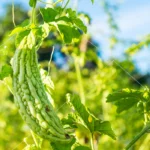Bajra Cultivation in India: Growing Pearl Millet or Bajra Crop on Your Farm, A Comprehensive Cultivation Guide
India is known for its diverse agricultural practices, and one such crop that is widely cultivated in the country is bajra. Also known as pearl millet, bajra is a type of millet that is mainly grown as a kharif crop. Bajra cultivation plays an important role in the agricultural landscape of India, especially in states like Gujarat, Rajasthan, and Tamil Nadu.

More Information About Bajra Plant — The Benefits of Bajra Farming
What is Bajra (English Name – Pearl Millet)?
Bajra, scientifically known as Pennisetum Glaucum, is a versatile grain crop that belongs to the Poaceae family. This annual crop thrives in warm and arid regions, displaying its remarkable resilience in the face of challenging climatic conditions. Bajra is more commonly recognized as pearl millet, a nod to the pearl-like appearance of its grains that make it stand out.
Why is Bajra Cultivation Important?
Bajra cultivation holds a pivotal role for a multitude of reasons. First and foremost, its hardy nature renders it impervious to even the harshest weather, making it a preferred choice in areas with limited rainfall. The nutritional profile of bajra adds to its significance, offering a rich blend of protein, fiber, and essential minerals.
Notably, its low glycemic index positions it as a favorable dietary option for individuals dealing with type 2 diabetes. Beyond its status as a staple in human diets, bajra doubles as vital fodder for livestock, amplifying its indispensability in the agricultural landscape.
Information on the Benefits of Bajra / Bazra in India
Delving into the bajra crop cultivation reaps a host of rewards for farmers across India. The crop’s low-maintenance requirements are particularly noteworthy, as it demands notably less water compared to its counterparts. This characteristic makes bajra a natural fit for regions grappling with water scarcity or erratic rainfall patterns.
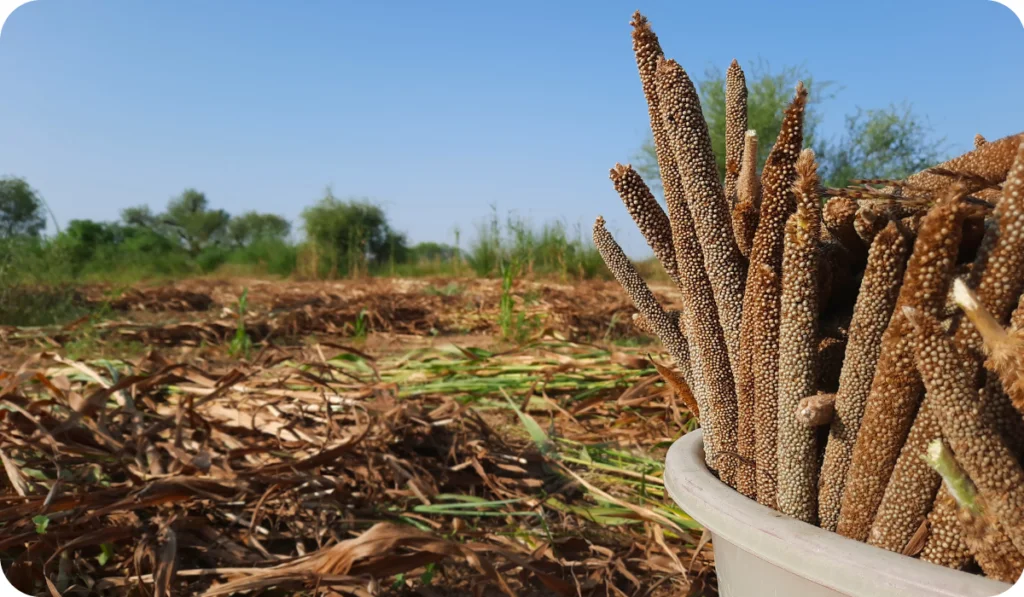
Beyond its immediate yield, the act of cultivating bajra or pearl millet enriches the soil by infusing it with organic matter. This infusion not only enhances soil fertility but also augments its overall structure, laying a robust foundation for sustainable farming practices.
Bajra’s inherent resistance to pests and diseases further fortifies its stance, diminishing the reliance on chemical interventions and promoting environmentally conscious agriculture. In terms of economic viability, the crop’s substantial yield potential translates to promising returns for farmers, making it a sound investment.
Varieties of Bajra in India
Bajra exhibits remarkable diversity through its array of varieties, specially in North India. These encompass both composite and hybrid options. Notable composite varieties like ICMB-155, WCC-75, and ICTP-8203 find favor in regions like India. Meanwhile, hybrids such as Pusa-322 and Super Boss offer additional choices, each tailored to specific conditions and needs.
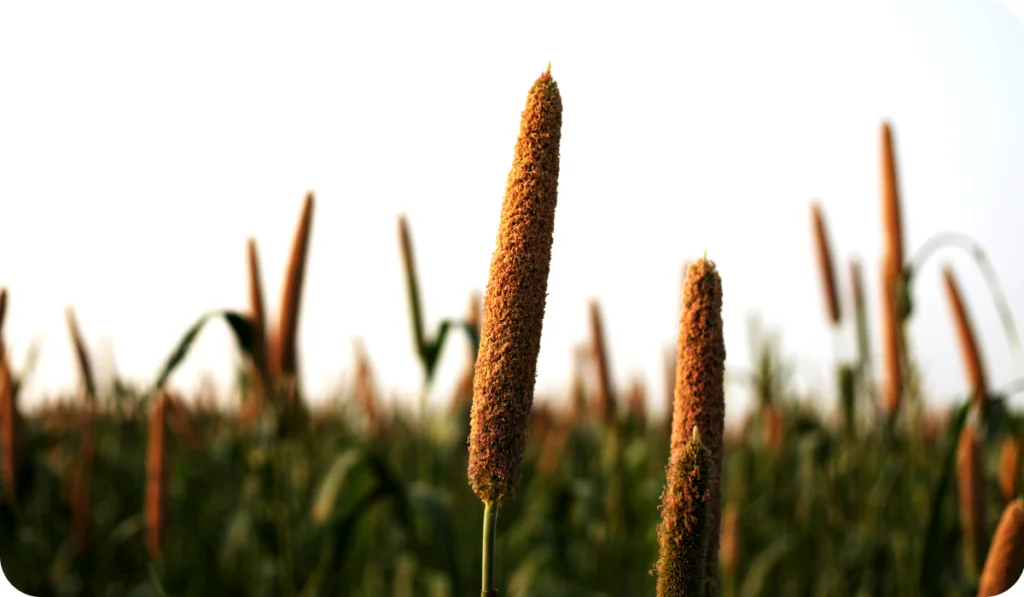
Cultivation Process
Choosing the right soil for bajra Cultivation Process
The success of bajra cultivation largely depends on choosing the right type of soil. Bajra thrives well in sandy loam soil with good drainage. The soil should have a fine tilth, which can be achieved by proper ploughing and leveling of the field. Bajra can also be cultivated in other soil types, provided they have good drainage capabilities.
Steps to Sow Bajra on Your Farm
The ideal time to sow bajra is during the summer season, as it is a kharif crop. Bajra can be sown directly in the field or in nursery beds and later transplanted. The seeds should be sown at a depth of 1 to 2 inches, with a spacing of 6 to 8 inches between plants. It is important to ensure proper moisture levels for successful germination.
Exploring the Duration and Sowing Time of Bajra
Also known as pearl millet, Bajra in Indian falls under the category of summer crops. This drought-tolerant coarse grain crop boasts a relatively short growth span, a characteristic that aligns well with its suitability for arid regions. In terms of timing, Bajra is predominantly cultivated as a Kharif crop, with the sowing period spanning from July to mid-August.
However, time of sowing and its versatility extends to Rabi cultivation as well, as it can be sown during the winter months in regions with moderate climatic conditions.
Nurturing Bajra Seeds: Sowing Techniques and Timings
Seeding practices play a crucial role in Bajra cultivation. With a recommended seeding rate of 4-5 kg per hectare, Bajra should be sown at a depth of 4 cm with a spacing of 45 cm between lines. The sowing period varies, ranging from July to mid-August for grain production, and from the last week of June to the first week of July for fodder purposes.
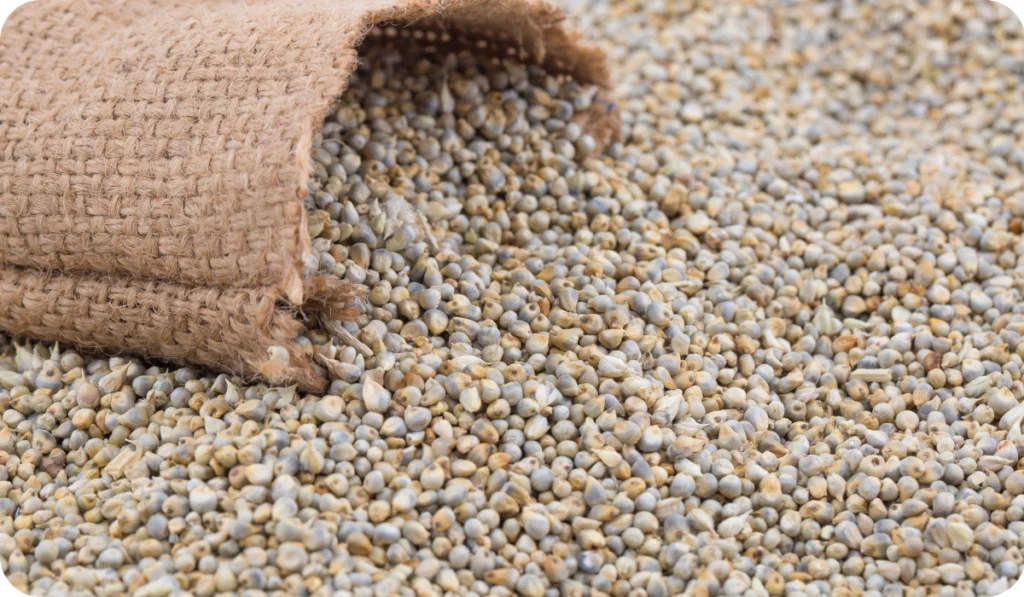
Seed Treatment: Disease Prevention Strategy
To ensure healthy plant establishment, it’s crucial to treat the seeds before sowing. Seed treatment with thiram or carbendazim at the recommended rate of 2-2.5 g per kg of seed helps ward off seed-borne diseases. To manage the notorious Ergot disease (Common Disease in Bajra in India), immersing the seeds in a 20% salt solution is a preventive measure that can pay dividends in the long run.
Watering and irrigation requirements for bajra plants
Bajra plants require regular watering, especially during the initial stages of growth. Adequate soil moisture is crucial for the development of healthy plants and high yield. However, it is important to avoid excessive waterlogging, as it can lead to root rot and other water-related diseases. Proper irrigation techniques, such as drip irrigation or sprinkler systems, can help optimize water usage and ensure uniform distribution.
Major Bajra Producing States in India
Bajra, also known as pearl millet, stands tall as a drought-tolerant crop in India’s agricultural panorama. This drought-tolerant crop and nutrition-rich grain has found its home in various states across the country, contributing significantly to food security and economic sustainability.
Major Bajra Producing States in India Includes the following:
Bajra Cultivation in Gujarat
Gujarat is one of the major bajra-producing states in India. The state has favorable climatic conditions, including adequate rainfall, which makes it suitable for bajra cultivation. The farmers in Gujarat use modern agricultural practices and techniques to maximize the yield of bajra crops.
Bajra Farming in Rajasthan
Rajasthan is known for its vast expanse of arid lands, and it is here that bajra production in India thrives. The state receives relatively lower rainfall, but farmers in Rajasthan have adapted their cultivation techniques to suit the climatic conditions. Bajra farming in Rajasthan plays a crucial role in the agricultural economy of the state.
When it comes to Bajra cultivation, Rajasthan emerges as the largest producer of Bajra in India, claiming the crown in Bajra’s kingdom. Known as the largest producer of Bajra in India, this state has mastered the art of harnessing the potential of arid landscapes.
The sandy loam and light soils of Rajasthan, coupled with its favorable climate, create an environment where Bajra thrives effortlessly. The vibrant golden fields of Bajra in Rajasthan serve as a testament to the state’s agricultural prowess.
Importance of Bajra in Tamil Nadu
Tamil Nadu, located in the southern part of India, also holds significance in bajra cultivation. The state receives moderate rainfall and has fertile soil, making it suitable for bajra farming. Bajra cultivation contributes to the food security of the state and provides livelihood opportunities to farmers.
Harvesting and Storage
When to Harvest Bajra Crop?
The right time to harvest bajra crops is when the grains on the spike start turning yellow or brown. At this stage, the moisture content in the grains is optimal for harvesting. It is important to monitor the crop regularly to determine the ideal time for harvesting, as delaying or harvesting too early can affect the quality and yield of bajra.
Tips for Proper Storage of Bajra
After harvesting, it is crucial to store bajra properly to maintain its quality and prevent losses. The grains should be thoroughly dried and stored in a clean and dry place, preferably in moisture-proof containers. Proper ventilation should be ensured to prevent the accumulation of moisture or the growth of molds or fungi. Regular monitoring of the stored bajra is necessary to detect any signs of spoilage or pest infestation.
Fodder Production using Bajra
In addition to its use as a food crop, bajra also serves as an excellent source of fodder for livestock. The stalks and leaves of the bajra plant can be used as animal feed, providing essential nutrients and roughage. Bajra fodder production can supplement the feed requirements of cattle, ensuring their optimal health and productivity.
Tips for Successful Bajra Cultivation
Best practices for Bajra Production – Growing Bajra in a Systematic Way
To achieve successful bajra cultivation, it is essential to follow best agricultural practices. This includes selecting high-quality seeds, preparing the soil well in advance, providing adequate irrigation, and timely weeding and pest control. Monitoring the crop for any signs of nutrient deficiencies or diseases is also crucial in maintaining optimal plant health.
Common Pests and Diseases in Bajra Cultivation Guide
Like any other crop, bajra is susceptible to various pests and diseases. The most common pests in bajra that affect bajra crops include stem borers, shoot flies, and aphids. Diseases such as downy mildew and ergot can also pose a threat to bajra cultivation. Timely identification and appropriate control measures, including the use of organic pesticides, can help minimize crop damage and ensure healthy plant growth.
Termites, nematodes, stem borers, and shoot borers pose significant threats to Bajra crops. Tackle these pests head-on with appropriate strategies. Chloropyriphos 20% EC, for instance, can be employed against termites, while for nematode management, Forate 10G is an effective solution. Stem and shoot borers can be controlled using Cabofuron 3G, Forate 10G, Di methoate 30% EC, or Quiolphos 25% EC, depending on the severity of the infestation.
Disease Management – Guarding Against Diseases
Bajra, like any other crop, is susceptible to diseases that can threaten its health and productivity. Ergot, characterized by the formation of scalars and black powder in grains, can be managed through seed treatment and the application of chemicals like Zeerum 80% WP, Zeneb 75% WP, or Mencozeb 75% WP. Similarly, Bajra Smut and Ear Kokkle/Green Ear Disease demand vigilance and treatment to ensure a disease-free crop.
Optimal Conditions for High Production of Bajra
Bajra requires certain optimal conditions for high production. These include a moderate temperature range of 25 to 35 degrees Celsius, well-drained soil with good fertility, and a sufficient amount of sunlight. Adequate rainfall or availability of irrigation facilities is essential for successful bajra cultivation. Additionally, regular soil testing and nutrient management practices can help maintain soil fertility and enhance the yield of bajra crops.
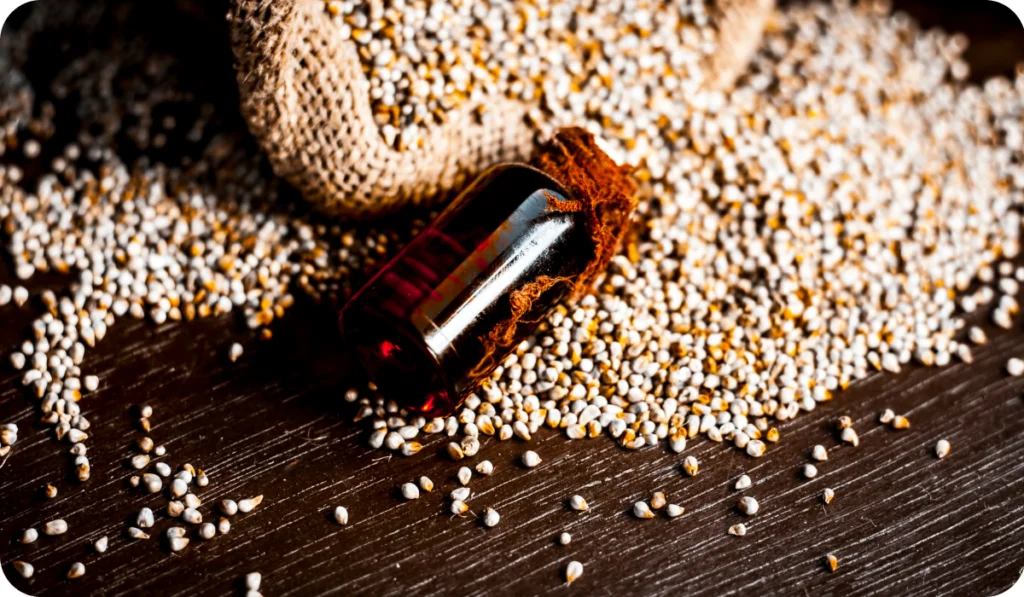
Bajra cultivation in India holds tremendous potential for fulfilling the country’s food requirements, boosting the agricultural sector, and improving the livelihoods of farmers. By following proper cultivation techniques, utilizing appropriate resources, and adopting sustainable farming practices, farmers can maximize the yield and quality of bajra crops. With its nutritional value, versatility, and ability to thrive in challenging environments, bajra continues to play a vital role in India’s agricultural landscape.
About our Web Store www.shehrikisaan.com
For a wide selection of fertilizers and soil amendments suitable for all these plants, we invite you to explore our esteemed webstore at www.shehrikisaan.com. Our webstore offers a comprehensive range of products designed to enhance the growth and vitality of your plants.
Whether you’re seeking specialized fertilizers, organic amendments, or premium-quality soil enhancers, our webstore is your one-stop destination. With our commitment to providing garden enthusiasts with top-notch products, you can trust us to cater to your gardening needs effectively. Visit www.shehrikisaan.com today and unlock the secret to flourishing plants.
Discover our Social Media Presence and web store. Choose your favourite platforms:












